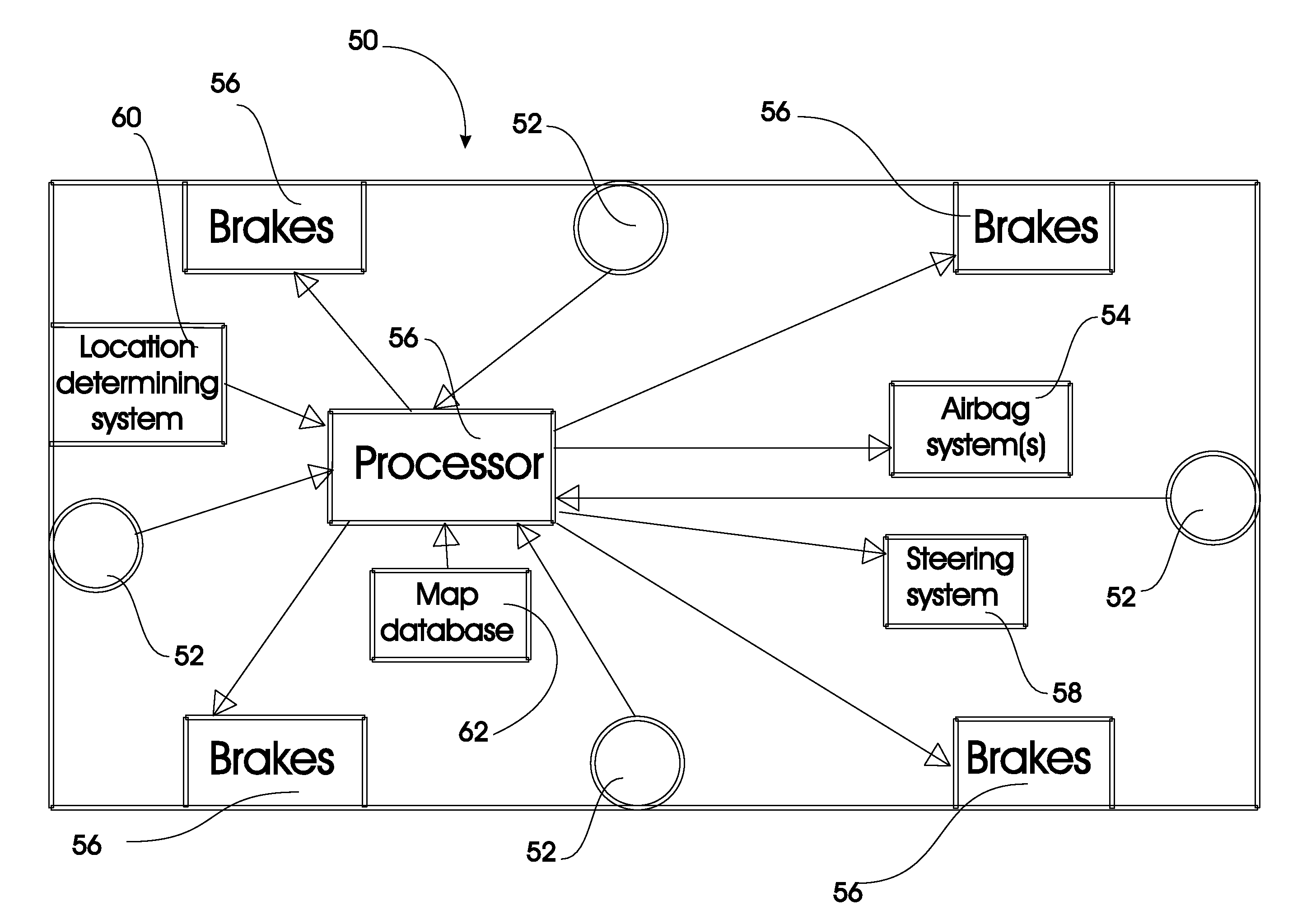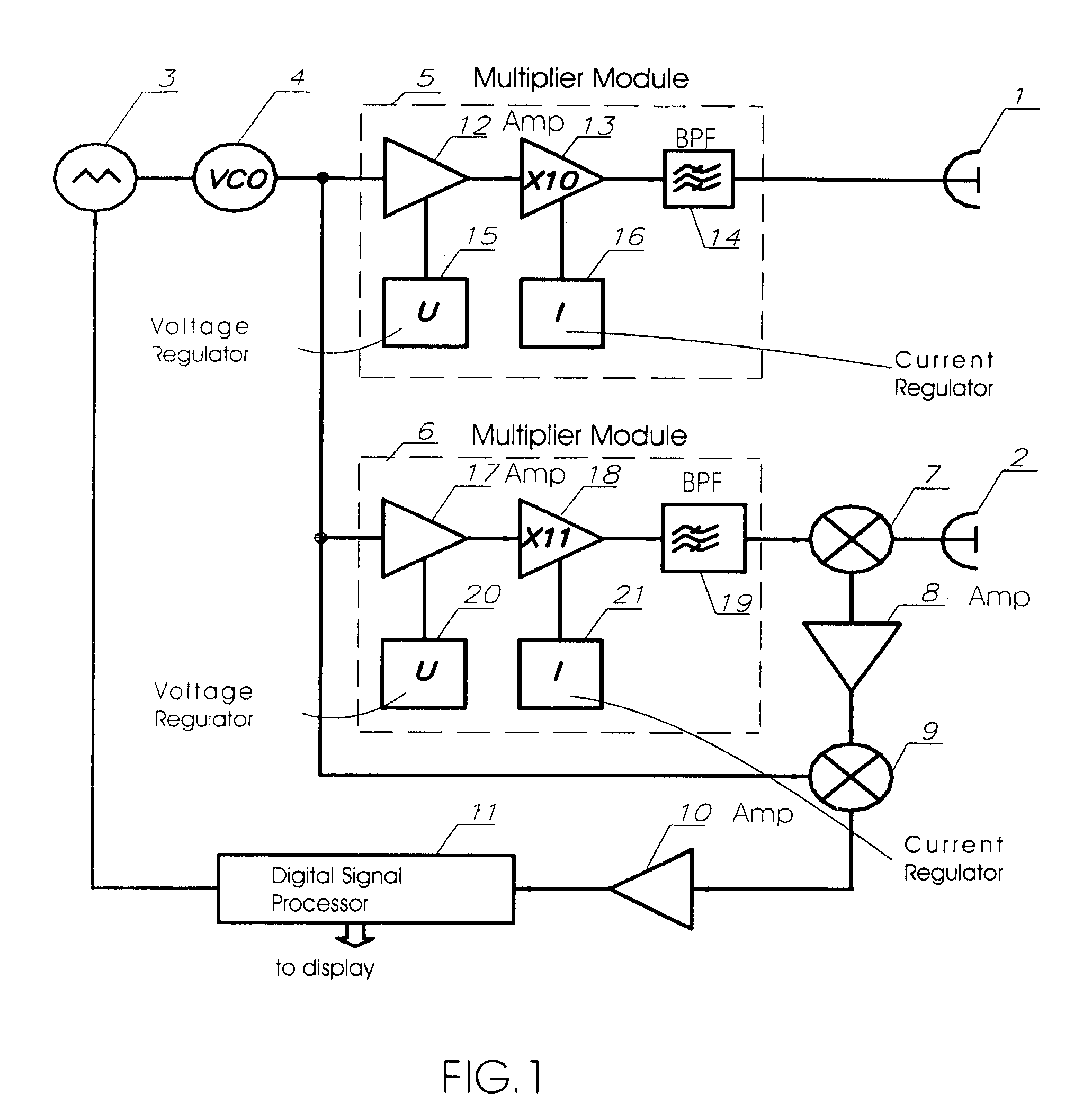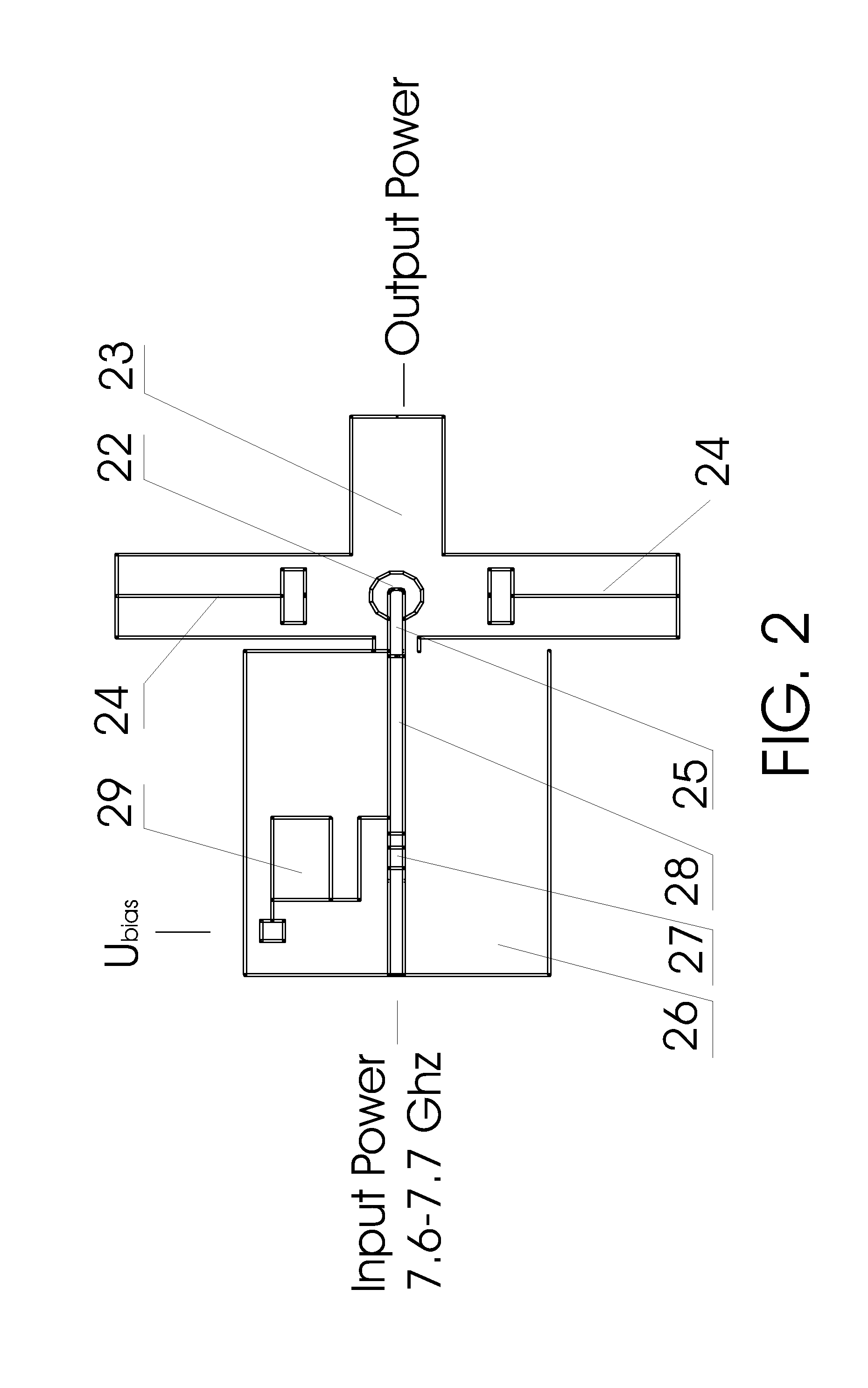Short-range automotive radar transceiver
a transceiver and automotive technology, applied in the field of short-range radars, can solve the problems of low efficiency (about 2%-4%), high cost of assembling and tuning wave-guide diode oscillators, and low phase noise and power output, and achieve low cost of automotive radars, small size and mass of transceivers, and high reproducibility of operating parameters
- Summary
- Abstract
- Description
- Claims
- Application Information
AI Technical Summary
Benefits of technology
Problems solved by technology
Method used
Image
Examples
Embodiment Construction
1. Hybrid Integrated Waveguide Transceiver of Automotive Radar with Two Antennas
1.1 General Description of the Operation of Radar Transceiver with Two Antennas
[0045]Referring first to FIG. 1, a block diagram of a transceiver operating in the 76-77 GHz frequency range in accordance with the invention is shown. One intended use of this transceiver is as a front-end of short-range FMCW automotive radar. The circuit of this transceiver involves two separate antennas—transmit antenna 1 and receive antenna 2. Use of two separate antennas, which should be adequately isolated from each other, enables a considerable increase in transceiver potential and excludes application of MM-wave isolators. The active MM-wave components of this transceiver operating at 76-77 GHz are highly efficient frequency multiplier modules with high multiplication factor implemented on silicon IMPATT diodes. The main principles of construction of this frequency multiplier over the whole MM-wave range (30-300 GHz) a...
PUM
 Login to View More
Login to View More Abstract
Description
Claims
Application Information
 Login to View More
Login to View More - R&D
- Intellectual Property
- Life Sciences
- Materials
- Tech Scout
- Unparalleled Data Quality
- Higher Quality Content
- 60% Fewer Hallucinations
Browse by: Latest US Patents, China's latest patents, Technical Efficacy Thesaurus, Application Domain, Technology Topic, Popular Technical Reports.
© 2025 PatSnap. All rights reserved.Legal|Privacy policy|Modern Slavery Act Transparency Statement|Sitemap|About US| Contact US: help@patsnap.com



